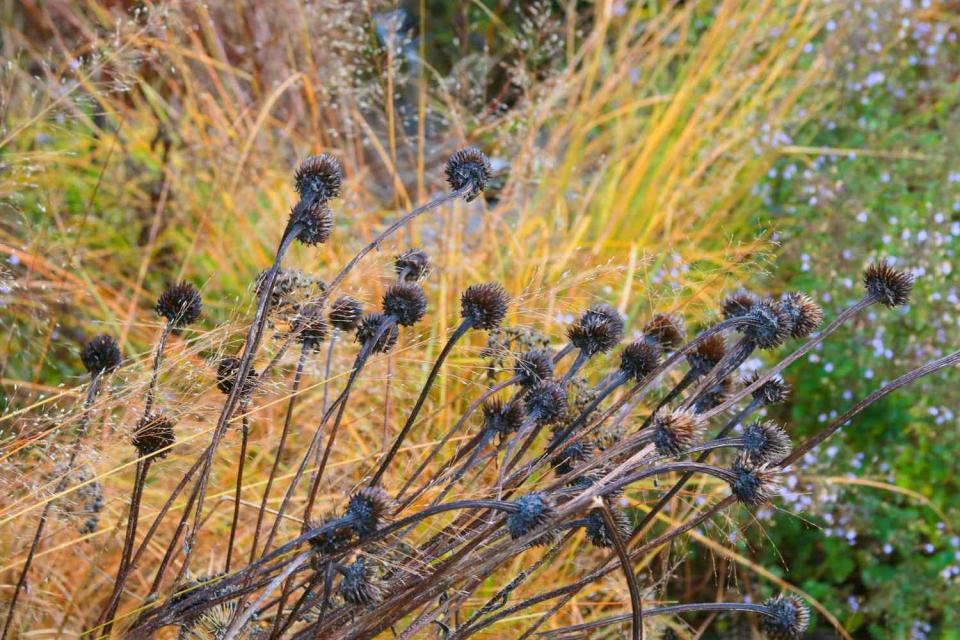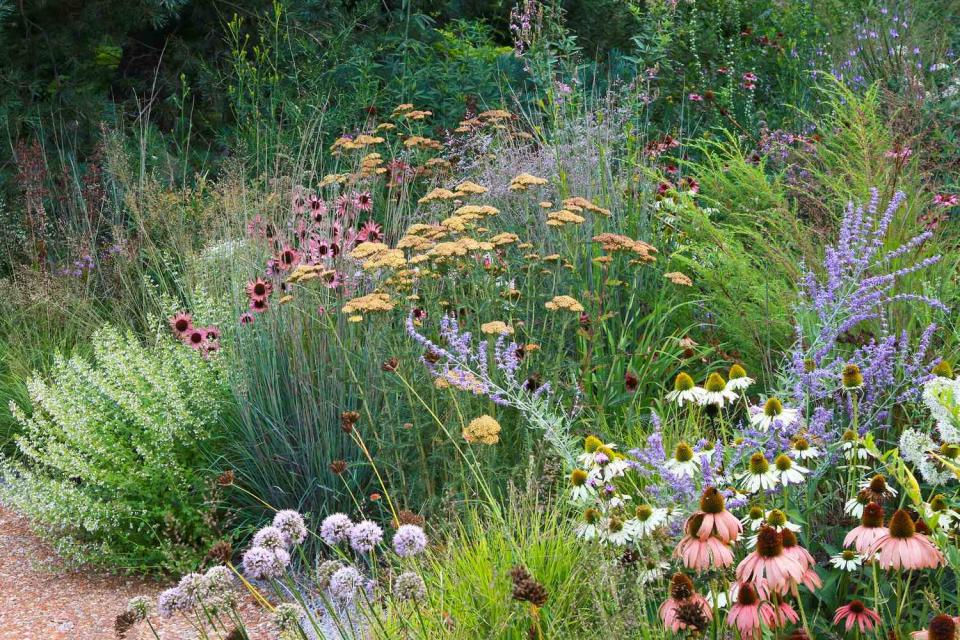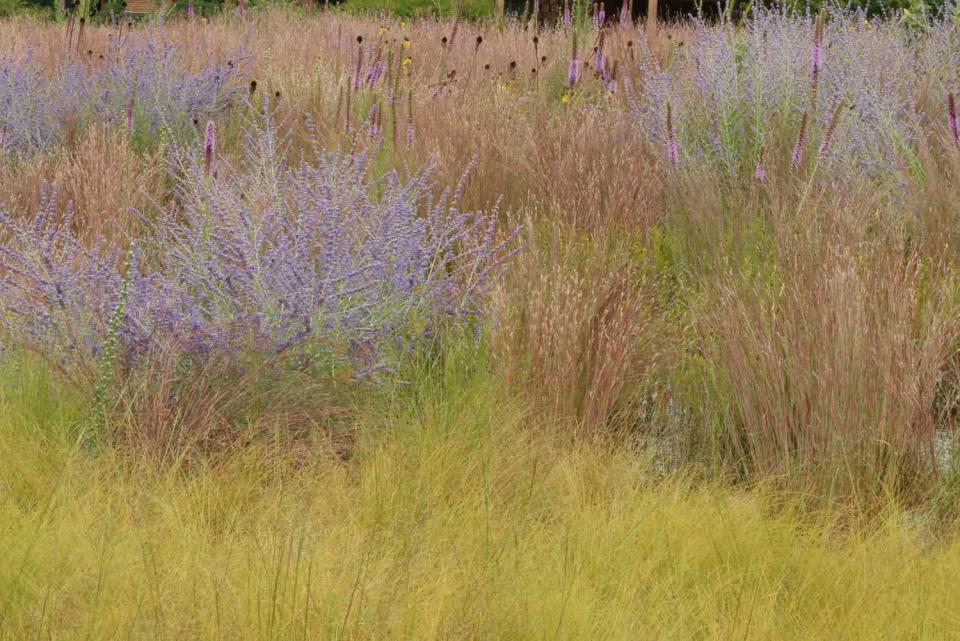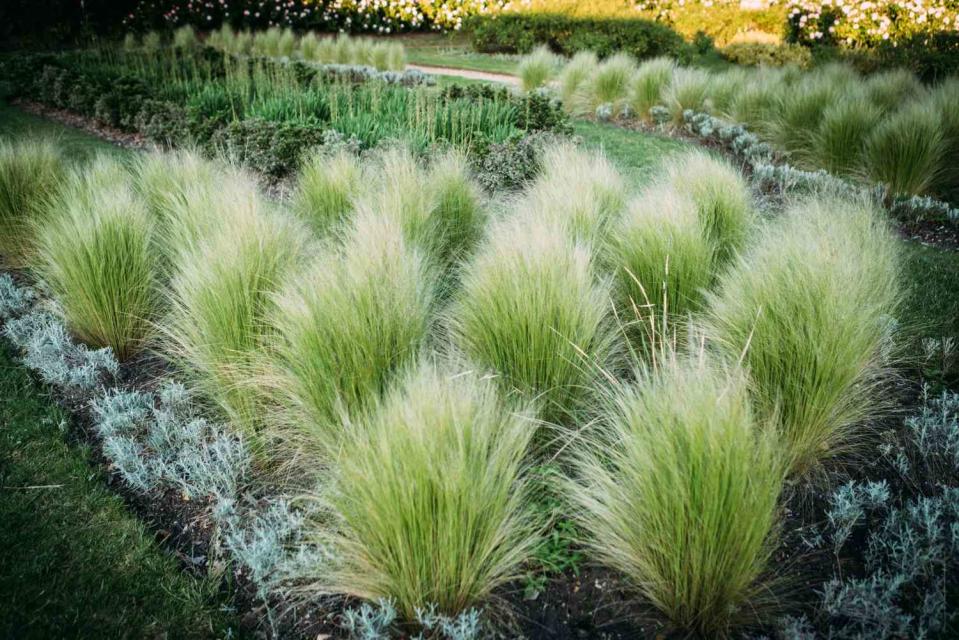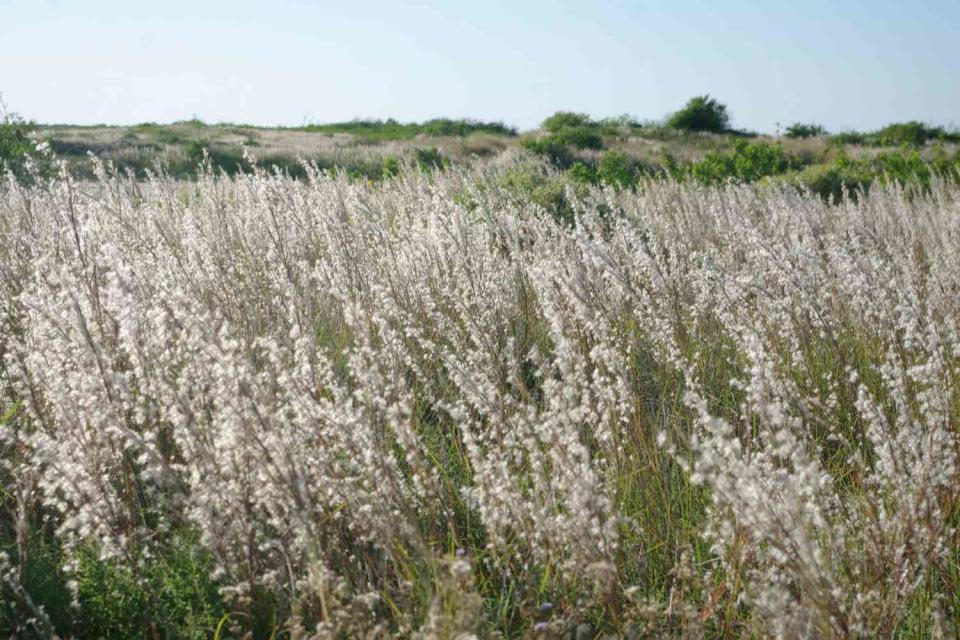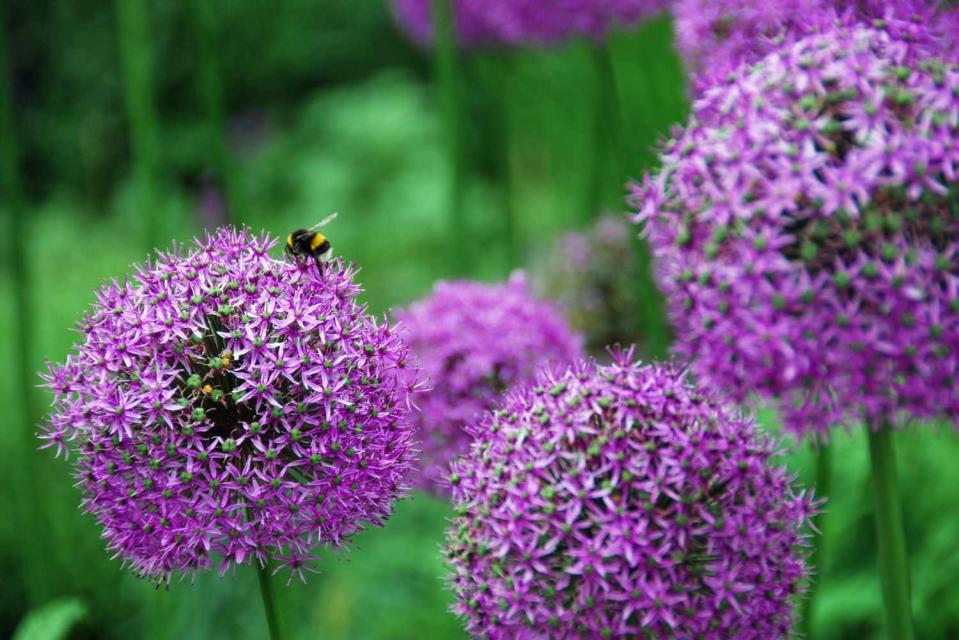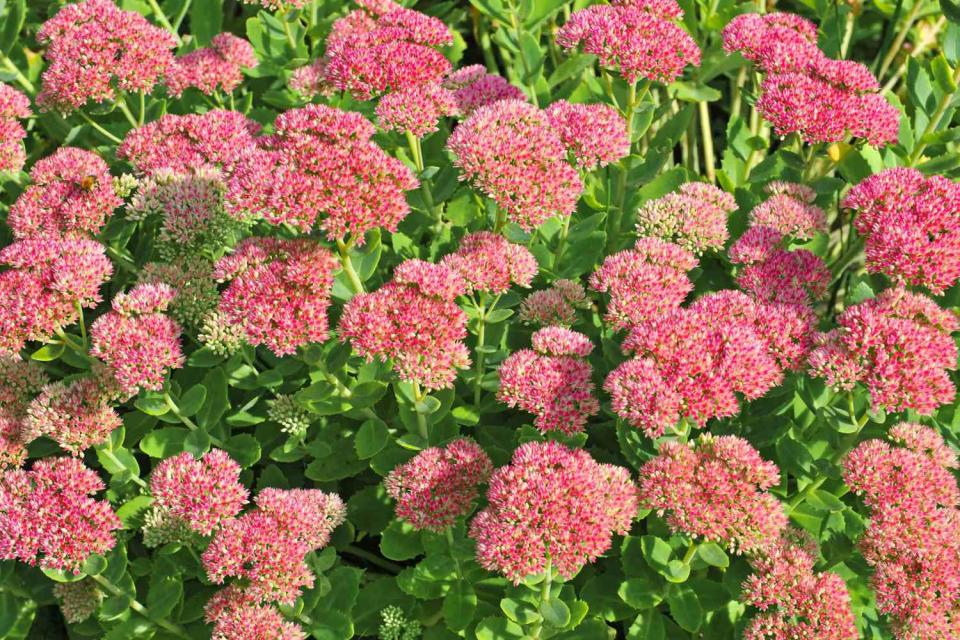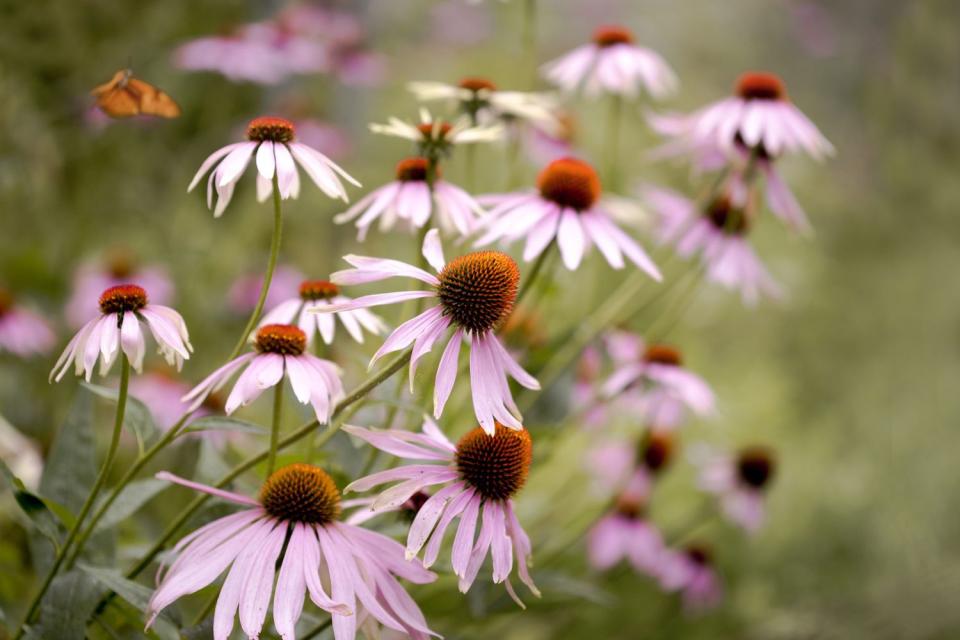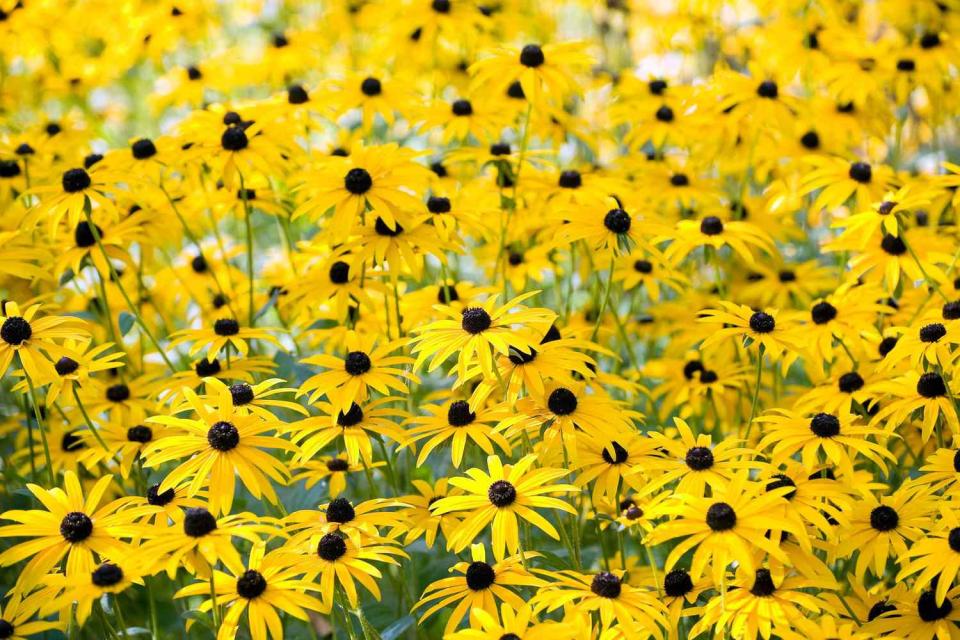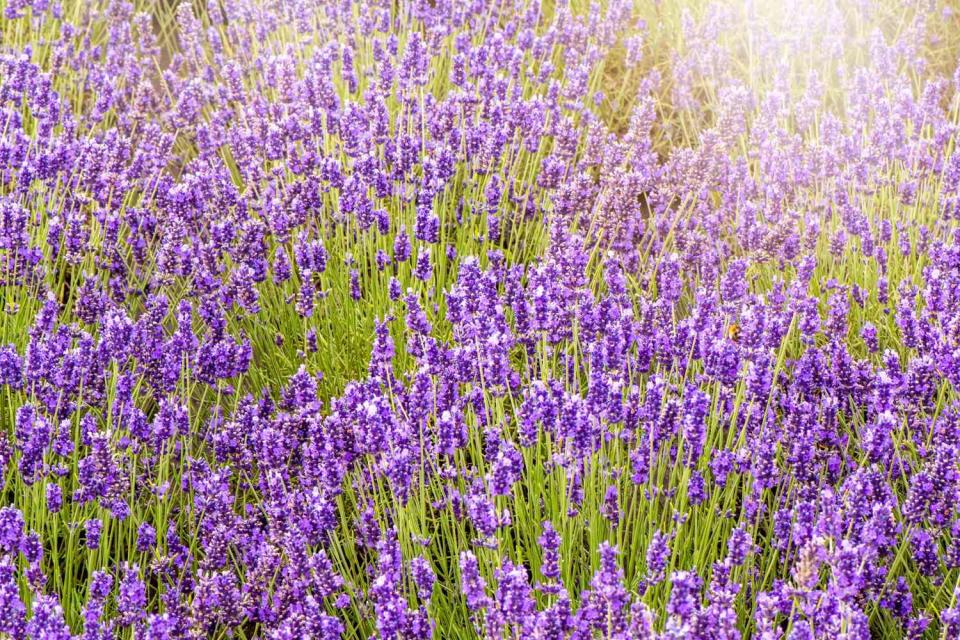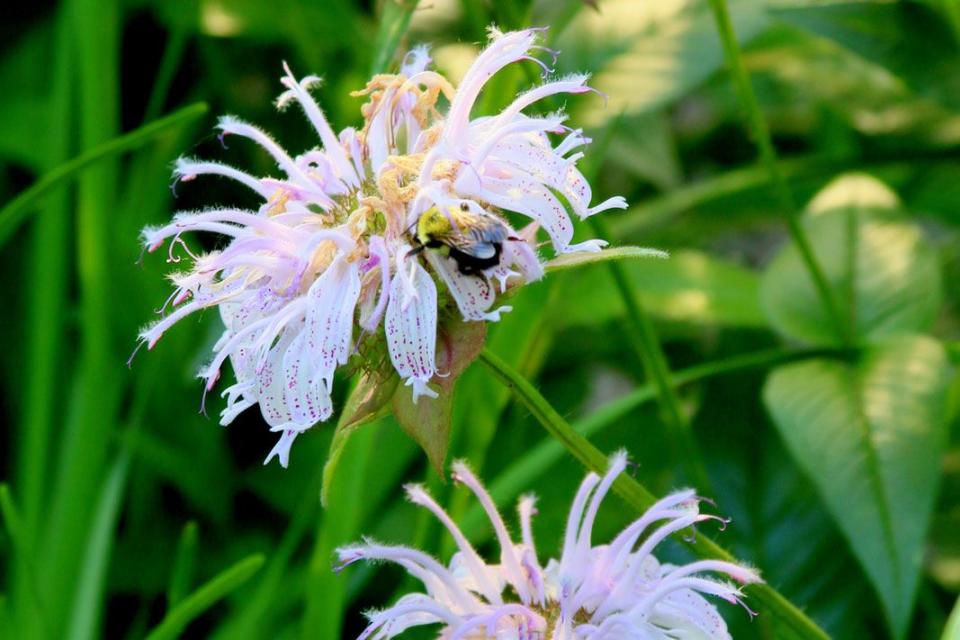Deprecated: str_replace(): Passing null to parameter #3 ($subject) of type array|string is deprecated in /home/newsfqwf/kechambers/wp-includes/formatting.php on line 4268
]]>
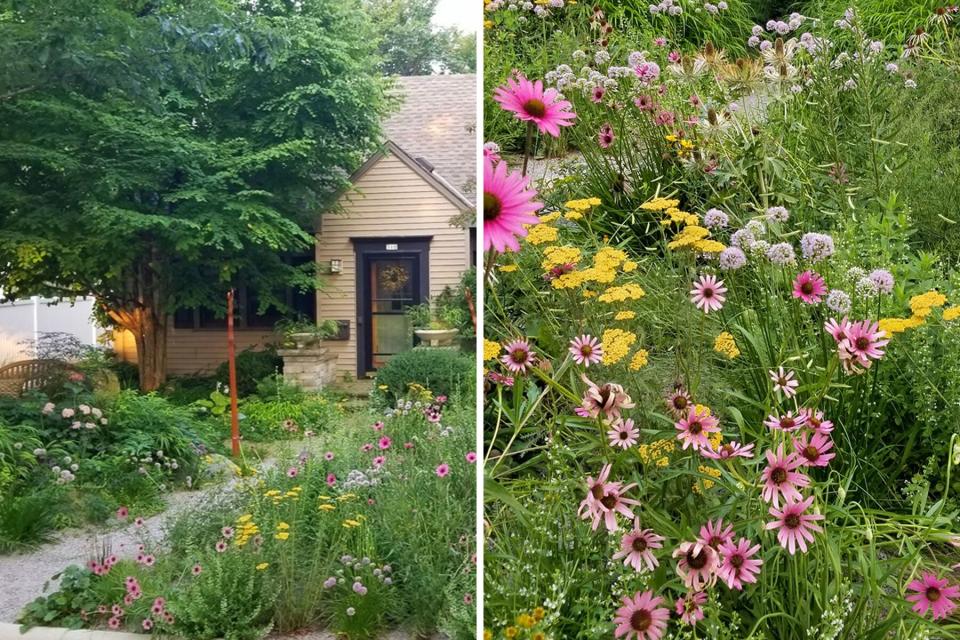 Gravel Garden with flowers in front of home Courtesy of Jeff Epping TABLE OF CONTENTS On This Page If you want to start a garden, but you don’t have time to tend to one, turn to a system that’s been growing in popularity for its eco-friendly and low maintenance reputation: gravel gardens. It’s a form […]]]>
Gravel Garden with flowers in front of home Courtesy of Jeff Epping TABLE OF CONTENTS On This Page If you want to start a garden, but you don’t have time to tend to one, turn to a system that’s been growing in popularity for its eco-friendly and low maintenance reputation: gravel gardens. It’s a form […]]]>
Gravel Garden with flowers in front of home
Courtesy of Jeff Epping
TABLE OF CONTENTS
-
On This Page
If you want to start a garden, but you don’t have time to tend to one, turn to a system that’s been growing in popularity for its eco-friendly and low maintenance reputation: gravel gardens. It’s a form of xeric gardening—planting with water conservation in mind—that uses small pebbles in place of soil amendments and mulch.
While it may seem like you need a green thumb to be able to grow plant matter in rocks, even beginners can start a gravel garden. Best of all, the environment you’ll create is highly attractive for perennials, bulbs, grasses, and other types of native plants.
Gravel garden with flowers
Courtesy of Jeff Epping
Related: 12 Ground Cover Plants That Will Fill in the Negative Space in Your Garden
What Is a Gravel Garden?
As the name implies, a gravel garden is an area of land where mostly native plants grow in a bordered section of gravel. A sustainable alternative to some other gardening systems, gravel gardens require about 80% less maintenance than a typical perennial garden. “When we create these, we want to create a garden that will be good on its own without the input of additional water, fertilizer, and other chemicals that you would use to protect your plants,” says Jeff Epping, director of horticulture at Olbrich Botanical Gardens.
Their ability to flourish with very little water and zero soil amendments also means you don’t need to worry about weed growth. “A lot of weeds that we experience thrive in very rich, moist soils,” Epping says. The dry environment of a gravel garden means weed seeds don’t have what they need to germinate, grow, and thrive.
Pale Purple Coneflower (Echinacea Pallida)
Courtesy of Jeff Epping
How to Create a Gravel Garden
Anyone can create a gravel garden, but they’re especially ideal for people who have a hard time keeping plants alive due to harsh growing conditions, like dry soil and full sun. And of course, they’re perfect for anyone looking for a relatively hands-off approach to gardening.
Story continues
Does this sound like the right fit for you and your home? If so, we recommend starting your gravel garden in the spring, which is the best time to plant and establish greenery. “Start out small and see how it goes for you if you don’t want to jump in full force,” Epping says.
Find the Right Location
Like many gardening projects, you’ll need to be thoughtful about where you place your gravel garden. It can be as simple as a small plot of land in your backyard—or you can make one that takes over your entire landscape. “They’re great for areas that may already be experiencing conditions that make them hot and dry,” says Josh Williams, garden manager at Paul J. Ciener Botanical Garden. An area that receives full sun is ideal.
Also consider the type of soil you’re working with—soils that are harder to grow in (think too rocky or harder clay) would work well for a gravel garden. No matter your dirt’s composition, a successful gravel garden should always have well-drained soil.
Prepare Your Yard
One of the best parts of growing a gravel garden is that you can use your existing soil. But if your soil is covered by grass, you’ll need to start by removing it. “You can do it mechanically and strip it off with a sod cutter,” Epping says. Other options include covering turf with black plastic for a yea or spraying with herbicides to kill the grass. “After applying the herbicide, mow your grass really short and it should die off,” Epping adds.
Create a Border
Making a border is one of the most crucial steps when creating your own gravel garden. “If we don’t have something to retain the edge, the gravel will just taper right off. It’ll go from 4 to 5 inches to 3 to 2 to 1 to nothing,” Epping says. “Then, those edges will be open to weed invasion because they won’t have that thick layer of gravel to keep the weed seed from getting a foothold to germinate and grow.”
You can make your border with just about any common building materials. Rocks, boulders, metal edging, bricks, pavers, poured concrete, and even treated wood all work. Just make sure the border covers all edges of your gravel garden.
Lay Your Gravel
The type of gravel you use is another key component to a successful gravel garden. “The gravel should be washed and small, anywhere from 1/4 inch to 3/16 inch,” says Lisa Roper, horticulturist at Chanticleer. Washed simply means that the gravel has been cleaned of any dirt and debris so it looks nice when you use it to fill your landscape. “Pea gravel is rounded and looks good in a blend of mixed colors. Sharp gravel made of granite or quartz also works well,” Roper says.
After selecting your gravel, use it to fill in your border. Spread the gravel out evenly to a depth of about 4 to 5 inches. “Think of marbles in a jar, where you always have the airspace in between all of the marbles,” Epping says.
Gravel garden with flowers
Courtesy of Jeff Epping
Related: Virtually Meander Along the Pathways of Martha’s Perennial Garden, a Landscape of Delights
How to Add Plants to a Gravel Garden
Now it’s time for the part you’ve been waiting for—putting in your plants into the gravel. For this, you’ll want to use drought-tolerant native plants with deep root systems. You shouldn’t plant seeds in a gravel garden, since it’s harder for the roots to establish.
“When we plan, we typically use 3.5 or 4.5 inch pot size perennials, because they’re about the correct depth,” says Epping. “If you use a gallon pot, they’re actually too big and you have to end up shaving off some soil to get them in.”
-
Lay out your potted plants in the areas you want them to grow, keeping each about 12 to 18 inches apart.
-
Remove the plant from the pot and hover it over a bushel basket.
-
Over the basket, peel off the top inch of soil to remove any weed seeds from the nursery before planting.
-
Dig about 4 to 5 inches deep, past the gravel and into the soil, and insert the root ball.
-
Fill the area back in with soil and gravel. The gravel should touch the crown of the plant (where the stem meets the roots).
gravel gardens
Courtesy of Jeff Epping
Types of Plants to Grow in a Gravel Garden
Many different types of plants can grow in a gravel garden, including bulbs, perennials, and grasses. Since gravel gardens are meant to thrive with little water, look for plants that are drought tolerant. Also choose varieties that have deep root systems, which can pull moisture from all levels of the soil.
When in doubt, opt for native plants, which are often drought tolerant and attract pollinators, like bees and butterflies. “The best plants for gravel gardens often are our very own native prairie plants because they are very drought tolerant by nature and have deep root systems,” Epping affirms.
Prairie Dropseed (Sporobolus heterolepis)
Prairie Dropseed (Sporobolus heterolepis)
Little Bluestem (Schizachyrium Scoparium)
-
Type: Perennial grass
-
Zones: 3 to 9
-
Dimensions: 2 to 4 feet tall, 18 to 24 inches wide
-
Growing conditions: full sun; dry to medium, well-drained soil
Little Bluestem (Schizachyrium Scoparium)
Purple Sensation (Allium Hollandicum)
-
Type: Ornamental onion
-
Zones: 3 to 8
-
Dimensions: 2 to 3 feet tall, 1 to 2 feet wide
-
Growing conditions: full sun; dry to medium, well-drained soil
Purple Sensation (Allium Hollandicum)
Autumn Joy (Sedum Autumn Joy)
-
Type: Herbaceous perennial
-
Zones: 3 to 9
-
Dimensions: 1 to 2 feet tall and wide
-
Growing conditions: full sun; dry to medium, well-drained soil
Autumn Joy (Sedum Autumn Joy)
Pale Purple Coneflower (Echinacea Pallida)
-
Type: Herbaceous perennial
-
Zones: 3 to 9
-
Dimensions: 2 to 3 feet tall, 12 to 18 inches wide
-
Growing conditions: full sun to partial shade; dry to medium, well-drained soil
coneflower
Black-eyed Susan (Rudbeckia hirta)
-
Type: Herbaceous perennial
-
Zones: 3 to 9
-
Dimensions: 2 to 3 feet tall, 1 to 3 feet wide
-
Growing conditions: full sun; dry to medium, well-drained soil
Black-eyed Susan (Rudbeckia hirta)
English Lavender (Lavandula angustifolia)
-
Type: Herbaceous perennial
-
Zones: 5 to 8
-
Dimensions: 2 to 3 feet tall, 2 to 4 feet wide
-
Growing conditions: full sun; dry to medium, well-drained soil
English Lavender (Lavandula angustifolia)
October Skies (Aster oblongifolium)
-
Type: Herbaceous perennial
-
Zones: 3 to 8
-
Dimensions: 18 to 24 inches tall, 20 to 24 inches wide
-
Growing conditions: full sun; dry to medium, well-drained soil
Purple flowers in a gravel garden
Eastern Beebalm (Monarda bradburiana)
-
Type: Herbaceous Perennial
-
Zone: 5 to 8
-
Dimensions: 18 to 24 inches tall and wide
-
Growing conditions: full sun to partial shade; dry to medium, well-drained soil
monarda bradburiana
February Gold (Cyclamineus Daffodil)
-
Type: Bulb
-
Zones: 4 to 8
-
Dimensions: 1 to 1.5 feet tall, 3/4 to 1 feet wide
-
Growing conditions: full sun to partial shade; dry to medium, well-drained soil
February Gold (Cyclamineus Daffodil)
Gravel Garden Care
While the overarching goal of a gravel garden is to make it relatively low maintenance, extra nurturing is required when you’re starting out to help plants get established. After that, some simple annual care is all you’ll need to provide.
Light
As mentioned, you’ll need to establish your gravel garden in an area with full sunlight. This is largely because full sun is what most drought tolerant plants need to thrive. Additionally, the heat helps the soil stay relatively dry.
Another reason why you want to avoid shade? Leaves and other debris may fall from the trees and into the gravel, which may cause issues in your garden. “Any leaves that fall have actually then infiltrated the gravel. It becomes more like a soil [when it is] mixed in with the gravel—and that’s not good,” Epping says.
Water
Over time, your gravel garden will require less and less water. Eventually, you’ll only need to water it when your plants show signs of thirst. When you first start gravel gardening, however, you’ll need to water frequently until the plant are established. “The roots will need to find their way from the gravel to the soil,” says Roper. “Watering should be done regularly, every day for the first few weeks and then less often that first season depending on the weather.”
Annual Clean Up
Once your plants are established, the most maintenance you’ll have to perform is cleaning it up in the spring. “The enemy of the system is to let organic matter build up in the gravel,” Epping says. If you avoided cleaning your garden for about three years, for example, the organic matter will create a compost or soil in the gravel.
To clean up your garden, cut the perennials back about six inches and remove all the excess plant matter from the gravel. Then, go in with a blower and blow any debris out of the garden to get the rocks nice and clean. “Once that is done, you’re done for the season,” Epping says. “That’s the beauty of it. We don’t have to mulch them like we do with our normal beds, we don’t have to edge them like a lawn—all we do is just watch the plants grow.”
]]>Deprecated: str_replace(): Passing null to parameter #3 ($subject) of type array|string is deprecated in /home/newsfqwf/kechambers/wp-includes/formatting.php on line 4268
]]>
This story was reported in partnership with NPR’s Next Generation Radio — finding, coaching and training public media’s next generation.
A house in the heart of the Tower Grove neighborhood stands out with its lush green landscape.
Native fruit trees line the edges of the fence, a salad garden sits in the middle of the yard, and other herbs and vegetables are growing in scattered patches. A beehive is above in one corner and logs — used for the cultivation of mushrooms — are stacked beneath a tree.
Matt Lebon, a foodscaper in St. Louis, is the owner of this “urban food forest,” a type of gardening that focuses on edible and perennial plants. It is the home of Lebon’s business, Custom Foodscaping, which aims to replace traditional ornamental landscaping with edible plants.
This style of agriculture, Lebon said, may hold the key to weathering major climate changes.
“The idea behind this edible landscape is that these perennial native plants come back every year and that every year the system gets more robust, resilient and bountiful, so that you’re putting in less work and getting more out of it,” Lebon said .
Matt Lebon, 37, owner of Custom Foodscaping, on Monday, Sept. 12, 2022, in his backyard garden in south St. Louis.
Lebon didn’t grow up with a green thumb.
“My story is one kind of a childhood disconnected with nature, with plants, with animals,” Lebon said. “And I had no thoughts about where food could come from beyond Schnucks.”
But while working as a Peace Corps volunteer in Paraguay, he lived in a rural farming environment. Many members of the community had livestock, fruit trees and vegetable gardens.
“I witnessed firsthand how these small farmers were masters at managing the local ecology with a deep understanding of the plants and animals with which they were cohabitating,” he said.
And when the town experienced drought, he said, they were prepared.
“It was a really remarkable thing to see the resiliency that comes with a super diverse self-sufficiency model, one where people are not simply going to be affected by a summer drought because there’s all these other ways of weathering the storm, if you will ,” Lebon said. “This gave me the context for the power of resiliency.”
Lebon returned to Missouri and began working at EarthDance Organic Farm School, a 14-acre organic farm school in Ferguson. He said it faced many climatic challenges, like soil erosion, tilled soil getting washed away in water events and gullies forming during big rainstorms.
Matt Lebon breaks open a pawpaw fruit showing its custardy texture on Monday, Sept. 12, 2022, outside of his home in south St. Louis. “Pawpaw is the largest fruit tree native to North America and very, very few of us have ever tried it,” he said. “It’s the only custard apple plant that is, it’s got this tropical flavor and texture very similar to a mango or a banana. So if you like mangoes and you like bananas, you’re probably going to like pawpaw. It’s like straight baby food. Basically, you just scoop it right out.”
In response, he and his team implemented a farm-scale water management system — a type of land management that reestablishes a hydrological cycle, funneling water into the landscape as opposed to letting it run into the storm water system. They also planted fruit trees like pawpaw, a deep taproot native fruit that flowers late and is well-suited to challenging climatic conditions.
He used this knowledge and experience to create his own business. His now seven-year-old urban food forest is host to native fruit trees like the pawpaw as well as the persimmon, jujubes and perennial herbs and shrubs. Lebon advocates for these lesser-known plants by offering tours to the community.
“If we can get them even a taste, it will immediately light them up usually and get them intrigued to grow it in their own yard,” he said.
And since the founding of Custom Foodscaping, he’s tried to rely on earlier lessons of diversity and resilience.
“So one of the recent challenges that a lot of us gardeners have faced is the lack of cold winters,” Lebon said. “So a super-cold winter can kill certain pathogens, can prevent certain insects from overwintering, or it can simply significantly reduce the amount of insect eggs that overwinter.”

Philip Clark
/
NPR Next Generation Radio
Overwintering is a term used to describe a type of hibernation insects use to survive the cold. But without cold winters, more insects can survive the harsh conditions. Lebon said he’s had issues with flea beetles — a pest that affects brassica plants like arugula, broccoli or cabbage.
“Arugula is a really important early spring green, and if it’s super holey, then it’s really hard to bring to market,” he said.
But he found a solution.
“I think that the way that I chose to mitigate that was to grow lettuce,” Lebon said. “Turns out lettuce has almost no pest or disease issues here in our climate. Which is to say that diversity always wins.”
Copyright 2022 St Louis Public Radio. To see more, visit St Louis Public Radio.
]]>Deprecated: str_replace(): Passing null to parameter #3 ($subject) of type array|string is deprecated in /home/newsfqwf/kechambers/wp-includes/formatting.php on line 4268
]]>
RESTON, VA — This is a 10! Located in north Reston in a beautiful neighborhood, this fabulous contemporary is nestled among towering hardwoods, gorgeous landscaping, and a hardscape/garden entry that is lovely and welcoming.
The home features cathedral ceilings with skylights and dramatic design elements throughout, and walls of windows that bring the outside in. There are recent upgrades and updates galore: a light and bright kitchen with quartz countertops and stunning backsplash, a spacious and luxurious owner’s bathroom, two other gorgeous updated bathrooms, all new interior and exterior doors, and Andersen windows.
- Address: 1618 Woodstock Lane, Reston, VA
- Price: $999,000
- Bedrooms: 3
- Bathrooms: 3
- Listing Description: In addition, other details such as switches and hardware have been replaced, and the hardwood floors are in excellent condition. The roof and siding have been optimally maintained. The family room fireplace is complemented by handsome built-ins, and the living room fireplace has a custom marble surround. The main level office/bedroom includes a loft area accessed by a built-in ladder. The two-level deck out back views the unspoiled woodlands. The lower level offers a family room that opens to the deck and provides a gas fireplace and wet bar. There are two spacious bedrooms and a stunning hall bathroom on this level. In addition, there is a flex room and huge storage room that could be a great playroom. The HOA fee includes lawn maintenance, trash, and snow removal. This architecturally designed home boasts about 4000 sf, and is convenient to all Reston shopping and amenities. Welcome Home!
Listed by: Dianne Van Volkenburg, Great Falls
]]>Deprecated: str_replace(): Passing null to parameter #3 ($subject) of type array|string is deprecated in /home/newsfqwf/kechambers/wp-includes/formatting.php on line 4268
]]>
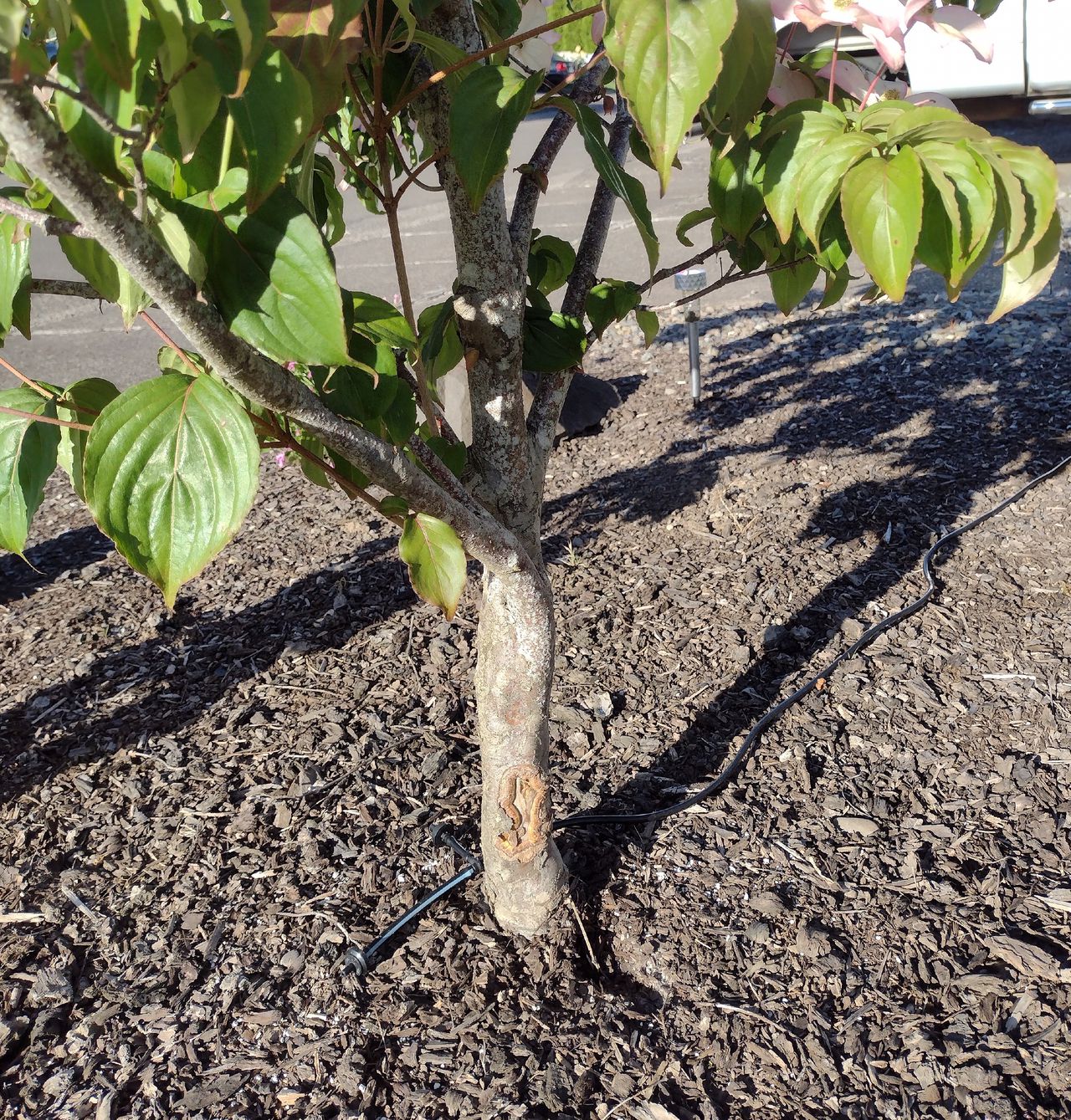 Gardening season is underground, and you may have questions. For answers, turn to Ask an Expert, an online question-and-answer tool from Oregon State University’s Extension Service. OSU Extension faculty and Master Gardeners reply to queries within two business days, usually less. To ask a question, simply go to the OSU Extension website, type it in […]]]>
Gardening season is underground, and you may have questions. For answers, turn to Ask an Expert, an online question-and-answer tool from Oregon State University’s Extension Service. OSU Extension faculty and Master Gardeners reply to queries within two business days, usually less. To ask a question, simply go to the OSU Extension website, type it in […]]]>
Gardening season is underground, and you may have questions. For answers, turn to Ask an Expert, an online question-and-answer tool from Oregon State University’s Extension Service. OSU Extension faculty and Master Gardeners reply to queries within two business days, usually less. To ask a question, simply go to the OSU Extension website, type it in and include the county where you live. Here are some questions asked by other gardeners. What’s yours?
Q: I need to remove creeping evergreens on a slope and replace them with appropriate ground covers. They must be low maintenance and drought hardy. – Klamath County
A: One challenge many homeowners face with landscaping steep slopes is soil runoff. The topsoil on hills can easily wash off, leaving an unattractive and muddy mess. In this case, you may want to consider planting your hill with groundcover plants. There are numerous varieties of shrubs and flowers that can thrive on slopes, giving you a better view and reducing the chances of erosion. Just keep in mind that you may need to bring in some additional soil and an erosion mat to establish the plants if the existing soil on the hill lacks the necessary nutrients.
Another popular option is to terrace sections of the slope within your lawn to create flat planting areas. Building several tiers on a hilly property will help you avoid erosion and allow you to add a variety of plants and landscaping elements for a functional and attractive design. Retaining walls can consist of a variety of materials to best fit your space and budget, such as stone pavers, wooden posts or concrete. However, when considering materials that stand the test of time, stone pavers are recommended. Additionally, when installing any retaining wall, it is important to add a good drainage system behind the wall to prevent the wall from cracking or even collapsing.
Getting plants to take hold on a hill can be difficult, as slopes tend to erode quickly due to drainage issues and soil runoff. If you don’t want to terrace your slope, adding rocks of varying shapes and sizes is another way to hold the soil and allow your plants to become established. Adding natural elements, such as a rock garden can give your slope a natural hardscaped look that’s both visually appealing and requires less maintenance.
Whatever method you choose for landscaping your slope, it’s also important to select the right type of plants for the area in which you live and your particular space. For example, deep-rooted plants can help stabilize soil, ground cover plants are great for covering up unattractive spots and ornamental grasses and perennials can be used to add color and texture to your slope.
When selecting your plants, it’s also important to keep maintenance in mind. Plants that don’t require shearing or a lot of annual clean up can save you time in the long run. Here’s some more information. –Chris Rusch, OSU Extension Master Gardener
Is this string trimmer damage?OSU Extension Service
Q: From the attached photo can you tell me what I need to do, if anything, about the wound on our dogwood trunk? So what you think may have caused it? — Polk County
A: The wound in the trunk is typical of damage from a lawnmower, string trimmer or some other type of collision. The wound appears to be healing, as we would expect. Dressings are no longer considered advisable since they tend to trap bacteria in the wound. With air exposure alone, the tree will mend the wound.
I do suggest pulling the mulch back several inches away from the tree trunk. Also, the irrigation line seems to be too close to the trunk. The trunk does not benefit from soil moisture. The most important place for irrigation is near the drip line of the tree or slightly beyond. That is where the root growth takes place. – Lynne Marie Sullivan, OSU Extension Master Gardener

KatsuraOSU Extension Service
Q: What’s wrong with my ‘Red Fox’ katsura tree? The leaves feel like it is receiving enough water but the leaves look funny on a few branches. We’re in Zone 8, facing east in Junction City. The tree is on a deep-root watering system with two tubes and is watered for 22 minutes every six days. — Lane County
A: This is most likely the aftermath of the sudden change from cold and wet to blistering heat. We are seeing many leaves with odd colors and worse just now. – Pat Patterson, OSU Extension horticulturist, retired
Q: I have potted camellias and the pH of the soil is fairly neutral. I’d like to lower the pH to 5ish. What is the best way to accomplish this goal? – Yamhill County
A: You can change the pH slowly over time, which allows the plant roots to adjust easily. OSU Extension has an excellent publication, “Acidifying Soil for Blueberries and Ornamental Plants” which is a detailed guide in doing just that – making the soil more acidic. After reading the publication, look for fertilizers for acid-loving plants in your preferred plant nursery. – Anna Ashby, OSU Extension Master Gardener

Spider and beeOSU Extension Service
Q: Could you put into words what is going on with these three creatures – the spider, the bee and the one “waiting in the wings”? – Benton County
A: The spider is a goldenrod crab spider (Misumena vatia). They hang out on flowers (including but not limited to goldenrod) and ambush insect visitors. Looks like it got the honeybee (Apis mellifera) on your sunflower that way and it is feeding on it. The other insect “waiting in the wings” is a little more mysterious. It is a type of true fly (Order: Diptera), but I can’t see enough detail to know for sure what type of true fly it is. Interestingly, there are small flies like that called zombie flies (Family: Phoridae, Apocephalus borealis) that parasitize and kill bumblebees and honeybees. Here is a link to a photo showing one of these flies on a bumblebee.
The adult zombie flies stalk adult bees and lay their eggs inside them. Then the fly larvae hatch and feed internally in the bees altering their behavior and eventually killing them. I’m not sure if that is a zombie fly trying to parasitize the honeybee which is already being fed upon by the spider, but that is one possibility. – William Gerth, OSU Extension Master Gardener

Wet spring leads to small garlic headsOSU Extension Service
Q: I followed your OSU Extension pamphlet for growing garlic and the bulbs never got very big. I bought good cloves and fertilized and watered a little in the fall. The tops came up, no bulb on top, planted in October and harvested last week. – Clackamas County
A: I’m going to let you decide which reason you might be able to correct for next year in the following article about mistakes with garlic. My best guesses would include planting too early. We usually recommend November for planting here in the PNW. (I see that the OSU pamphlet says September through November, but conventional wisdom says later is better).
My other guess would be our rainy, rainy, rainy spring. There was possibly just too much water in the soil to allow for larger bulbs. I don’t usually dig my garlic until July, so I don’t know how mine have fared this year, but another website says small bulbs may be related to soggy soils and we certainly had that! Don’t give up. Plant what you harvested this year or get new bulbs for next fall, because when you do pull up a huge bulb with big fat cloves there is nothing better. – Rhonda Frick-Wright, OSU Extension Master Gardener
]]>
